This article is written by Shenbaga Seeralan S. The case deals with the resolution of a legal matrimonial dispute between the husband and the wife, followed by subsequent relief. The case pans the issue of mental cruelty to the husband and how it was dealt with by the Apex Court. The article discusses the legal standpoint and precedents aligned to the case, with an in-depth analysis of the facts involved.
Table of Contents
Introduction
Marriage is a traditional string of partnership wound between a man and a woman. It is a civil contract that is performed on the basis of religion, culture, or tradition and varies across legal jurisdictions and cultural doctrines. The Great Greek philosopher and polymath Aristotle (384 – 322 BCE) defined marriage as the natural procreative union of male and female in his book Politics. The Christian philosopher and theologian St. Augustine (354 – 430 AD), in his work “The Excellence of Marriage”, describes marriage as a way to acquire children, fidelity and sacrament. The Christian philosophers took a theological view of marriage contrary to the economic and political views of Greek philosophers. The Hindu theologists view marriage as an institution by itself rather than merely a contract or a ritual. A Hindu marriage is termed ‘Vivaha,’ which means a sacred union that forms true and honoured companionship between individuals. A Hindu script, Manu Smriti describes eight types of marriage based on their mode of conduct. An Islamic book named Kitab al-nikah describes marriage as a social institution uniting a male and a female, entrusting them with certain rights and duties as recognised by the custom or law of the religion.
The famous German philosopher Immanuel Kant (1724 – 1804 AD), in his book “The Science of Right” under the sub-chapter The Natural Basis of Marriage, described marriage as the union of two persons of different genders for lifelong reciprocal possession of their sexual abilities. This union was mandated to be in accordance with the natural law and said to be dissolved when the production of children ceased. The present view of marriage has evolved a lot from the traditional view. It is viewed as a practical way to forge a romantic engagement along with a mutual commitment. The neo opinion on the concept of marriage is more egalitarian in nature, providing equal if not more rights to women. With the growing legal awareness, the rate of dissolution of marriage has increased globally. Based on Forbes Divorce Statistics, 2024, the global divorce rate stands at 1.8%. In India, the divorce rate is at 1.1% and is expected to rise. The rise in the dissolution of marriage is positively attributed to increased legal activism, individual autonomy, and the growth of community rights groups. However, it is also a result of lack of commitment, infidelity, domestic violence, substance abuse and economic gains.
This article shall predominantly deal with the case of U. Sree vs. U. Srinivas (2012) with preponderance on the issues related to marriage, the legality of the dissolution of marriage and the rights of the parties involved.
Details of the case
Case name: U. Sree vs. U. Srinivas (2012), (hereinafter referred to as ‘the case’)
Appellant: U. Sree (the wife)
Respondent: U. Srinivas (the husband)
Case no: Civil Appeal Nos. 8927-8928 of 2012
Equivalent Citation: 2013 (2) SCC 114
Bench: Justice K.S. Panicker Radhakrishnan and Justice Dipak Mishra
Acts involved:
- The Hindu Marriage Act, 1955 (hereinafter referred to as ‘HM Act’).
- The Family Court Act, 1984 (hereinafter referred to as ‘FC Act’).
Important provisions:
- Section 13(1)(i-a), Section 26 and Section 27 of the HM Act.
- Section 7 of the FC Act.
Background of the case
This case gained media coverage as the respondent of the case is a renowned artist Padma Shri Uppalapu Srinivas. He is a Mandolin player and a music composer with expertise in Carnatic music. He got married to a veena player, U. Sree, on 19th November 1994, at Tirupati, following Hindu customs. She is the daughter of an Indian Administrative Services (IAS) officer in the Vigilance department from Andhra Pradesh. They lived in Vadapalani, Chennai, after marriage and had a son on 30th May 1995. Due to childbirth, the wife, after a short stay in her in-law’s house, went to stay with her parents for a few months. Then, on 4th October 1995, the wife returned to Chennai and lived with her husband till 3rd January 1996. Their matrimonial cohabitation came to an end after this date. Both parties flung accusations against each other, which resulted in a legal dispute.
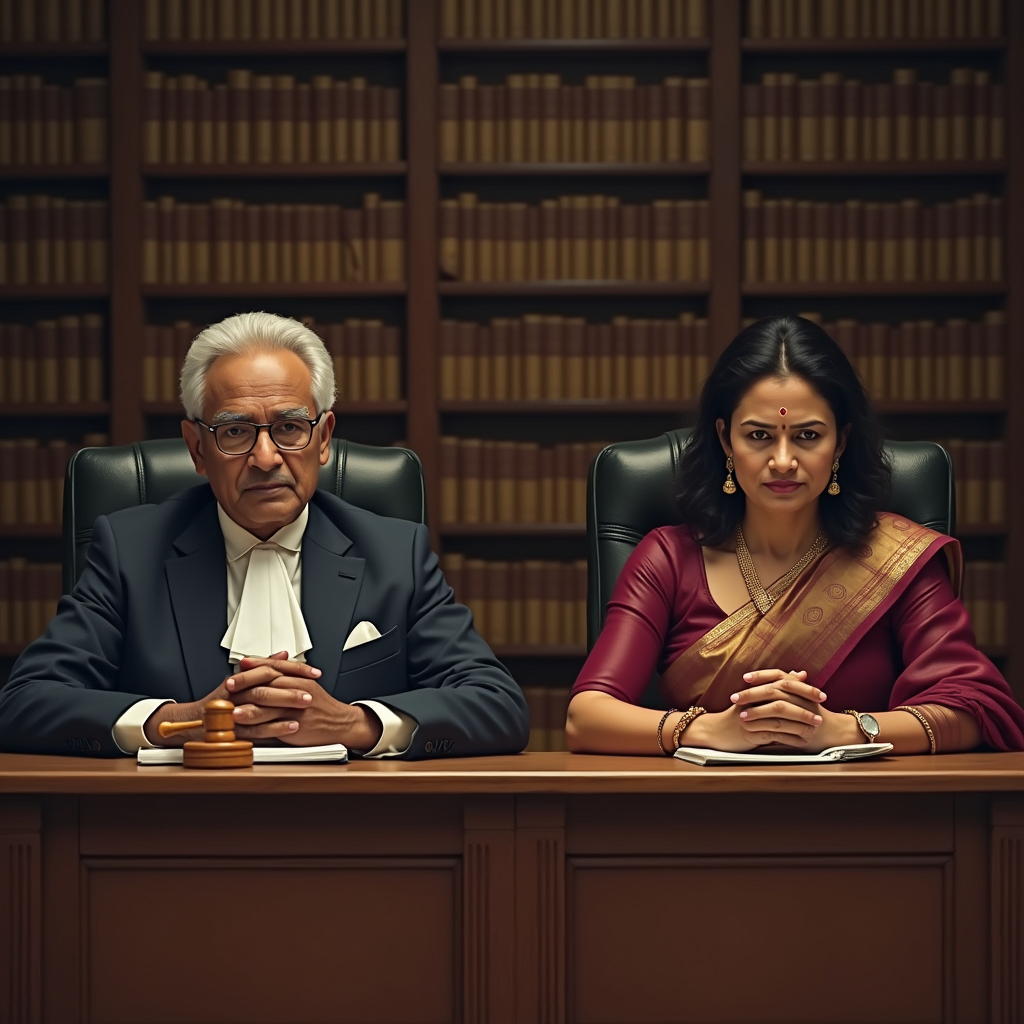
Facts of the case
The wife got separated from her husband on 3rd January 1996. Thereafter, she resumed her stay with her parents. Attributing to this separation, the wife filed an original petition under Section 9 of the HM Act before the Principal Family Court, Chennai. She pleaded for the restitution of conjugal rights. A year later, the husband filed an original petition under Section 13(1) (i-a), Section 26 and Section 27 of the HM Act, as well as Section 7 of the FM Act. The husband pleaded for dissolution of marriage, custody of the child and return of jewellery and other items. In spite of this case being pending before the Family Court in Chennai, the wife filed another petition before the Family Court in Hyderabad, which was eventually dismissed.
The Family Judge at Chennai tried both the cases together and examined the related evidence and records. Seven issues were framed based on the inspection of oral and documentary evidence, and the conclusion was reached that the wife treated the husband with cruelty. Based on the evidence, it was also found that the wife did not make any reasonable effort to forge a cohabitation with her husband for thirteen years. Thereby, the Judge dismissed the petition of restitution of conjugal rights preferred by the wife, whereas the petition of dissolution of marriage preferred by the husband was allowed. The Judge held that the custody of the child would remain with the mother, and the husband was not entitled to receive the jewels or any other items from the wife, owing to the lack of cogent evidence. The Family Judge passed the decree of dissolution of marriage along with the direction to the husband to pay permanent alimony of five lakh rupees each to the wife and the son within the duration of one month.
The wife appealed against the order of the Family Court to the Hon’ble High Court of Madras. It was contended that the order passed by the Family Court was based on assumptions which caused disgrace to the appellant and her family. The appellant also argued that the husband and his family were responsible for the desertion and that the husband had left the appellant in her parental home. The appellant asserted that the Family Court made an error in demarcating the evidence based on their admissibility. It was also stressed that the Family Court failed to deal with the documentary evidence presented by the appellant properly. The question of the substantiality of permanent alimony was brought into the picture, highlighting the income of the husband.
The respondent argued that the wife was inconsiderate of the musical passion and tradition followed by the respondent. It was corroborated by mentioning the statement of the appellant, which was made to her friends, that she wanted her husband to be behind bars on the grounds of dowry harassment. It was also avowed that the appellant gave a life threat to the respondent in the event of participating in the musical concert at Hyderabad. The respondent was left with no other option but to file a petition for dissolution of marriage.
The Division Bench, after hearing the arguments, retrospecting the evidence and examining the order of the Family Court, dismissed the appeal. However, the bench altered the monetary relief granted by the Family Court. The court directed the husband to pay a sum of 12,500 rupees to the wife and to his son from the date of order of the Chief Metropolitan Magistrate in Hyderabad till the date of order passed by the High Court of Madras, apart from the permanent alimony fixed by the Family Court. The court refused to accept the admissibility of the secondary evidence presented before it. Thereby, the court passed judgement on both the appeals preferred by the appellant. This made the wife file a Special Leave Petition under Article 136 of the Indian Constitution to the Hon’ble Supreme Court of India contesting the judgement of the High Court.
Auxiliary facts on petition to Family Court, Hyderabad

Despite the fact that the cases of dissolution of marriage filed by the husband and restitution of conjugal rights filed by the wife were pending before the Principal Family Court at Chennai, the wife preferred a fresh case of maintenance and separate residence under Section 18(1), Section 18(2)(a) and Section 18(2)(g) of the Hindu Adoption and Maintenance Act, 1956 read along with Section 7 of the FM Act. The petitioner and respondent were residing at Vadapalani, Chennai after marriage. After deciding to part ways with her husband, the petitioner started living with her parents in Hyderabad. The wife filed a petition in the Family Court at Hyderabad pleading for maintenance and separate residence. The petitioner claimed 15,000 rupees per month for the maintenance of herself and her child. Meanwhile, the petitioner filed an Interlocutory Application seeking interim maintenance. The court allowed the application and ordered the husband to pay 5000 rupees per month as interim maintenance.
The respondent filed an interlocutory application to the Division Bench of the High Court of Andhra Pradesh against the order passed by the Family Court. The Division Bench settled the revision petition, ordering the husband to pay a sum of 2500 rupees to the petitioner. The respondent further filed a civil miscellaneous petition to the Division Bench seeking clarification for the judgement. The bench clarified that the husband is mandated to pay the wife 3000 rupees per month from the date of filing the petition. The Division Bench directed the Family Court at Hyderabad to dispose of the original petition within three months from the date of the order.
The husband took a stand that the court had no jurisdiction in deciding the petition filed by the petitioner. It was highlighted that there is no specific mention of the jurisdiction or place of suing in the FM Act. The provisions under Section 20(c) of the Civil Procedure Code, 1908 have to be relied on. The counsel for the petitioner argued that the petitioner’s current place of residence was Hyderabad, and the court has jurisdiction to entertain the petition. It was also asserted that the Family Court has inherent powers to entertain petitions under Section 125 of the Criminal Procedure Code, 1973. The petitioner relied on the judgement of the Corporation of the city of Bangalore vs. M. Papaiah and Anr (1987) to ascertain that to determine the jurisdiction, the entire plaint has to be comprehended instead of considering one particular portion. The court, upon inspecting the records and hearing the arguments of the parties, found that no cause of action had happened in Hyderabad. It was also noted that since the issue is already pertaining to the Family Court, Chennai, the original petition filed by the wife was dismissed.
Issues raised
The parties of the case raised various issues in the series of appeals made before the respective courts. The Supreme Court was finally relied on to resolve those issues. Various issues presented in this case are
- Whether the respondent suffered mental cruelty, inflicted on him by the appellant?
- Whether the appellant was deserted by the respondent?
- Whether secondary evidence is admissible as evidence?
- What is the basis of fixing the sum of permanent alimony?
Arguments of the parties
The parties scanned the lengths and breadths in making a detailed and extensive argument to defend their case. The arguments were reinforced by the means of adding necessary precedents and relative provisions.
Arguments by the appellant
The appellant was represented by the learned counsel, Mrs. K. Sarala Devi. The counsel argued against the judgement of Family Court, Chennai and also refuted the contentions and issues projected for dismissing the appeal in Madras High Court. It was contended that both the Family Court and the High Court asserted mental cruelty and desertion complaints raised by the respondent without a proper legal standpoint. The two documentary evidence that the court relied on for arriving at judgement were Exhibit R-8 and Exhibit R-9. Exhibit R-8 was the xerox copy of the letter written by the appellant to the respondent. Exhibit R-9 was the English translation of the letter written by the appellant. It was contended that Exhibit R-8 and R-9 were not admissible evidence, and it was also asserted that they should not be treated even as secondary evidence under Section 65 of the Indian Evidence Act, 1872. It was enumerated that the decision to grant divorce and the rejection of restitution of conjugal rights were taken, recalling the total breakdown of marriage, which was not a legally allowed ground for divorce.
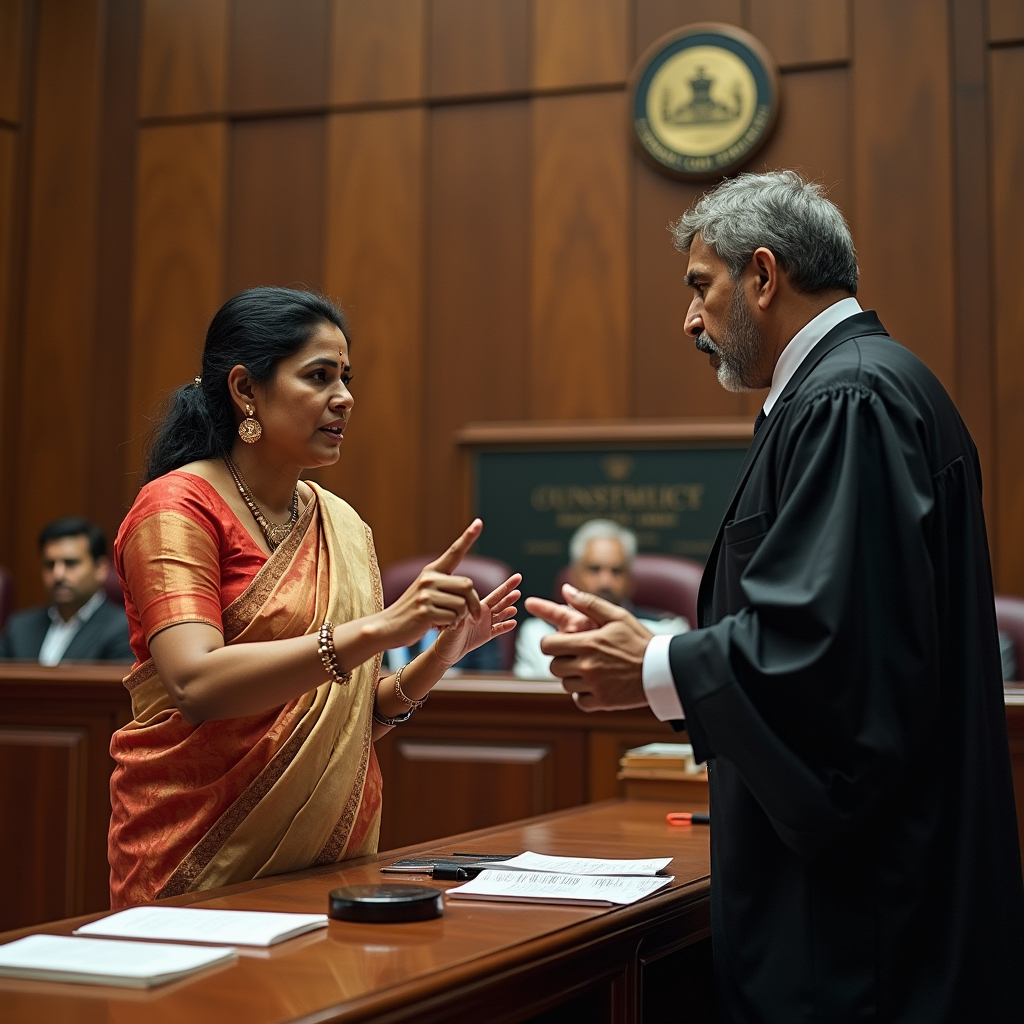
The counsel highlighted that the wife was aware of her husband’s musical tradition and devotion. It was also noted that the appellant was herself a veena player who was clearly aware of all the traditions and nuances of music. She devoted her life to enhancing the respect and popularity of her husband. It was her sacrifice that propounded the reputation and financial prospects of her husband. It was vehemently contested that the sacrifice made by the appellant was not reciprocated by the respondent. Instead, he failed to perform his duties as a husband. A strong denial was placed by the counsel on the accusation of cruelty made by the appellant. It was put forward that after gaining a reputation, the respondent and his family, to attract an enormous dowry, sought a second marriage. It was also contended that the respondent decided to file a petition of maintenance as she was deserted by her husband, which deteriorated the life of herself and her child. The learned counsel, on the final note, argued that the grounds for grinding of divorce were frivolous, and hence, it was pleaded that the judgement ordering divorce should be dismissed and the interim maintenance should be granted to the respondent.
Arguments by the respondent
The learned senior counsel, Mr. K. Ramamoorthy, appeared on behalf of the respondent. The counsel pleaded that there was a total mismatch in the marital relationship between the respondent and the appellant. The actions of the wife were aimed at disrupting the peaceful state of the respondent by throwing tantrums at him for trivial issues. The respondent was a classical music prodigy and indulged in serious devotion towards music and tradition. The musical guru of the respondent was his father, under whose supervision the respondent pursued his musical journey, discontinuing his formal education. It was mandated under the tradition to perform ‘sadhana’ as a ritual to improve the understanding of musical nuances as well as to maintain the Guru-Sishya hierarchy. It was contested that this facet of the respondent was not liked by the wife, which she expressed in the form of interrupting the sadhana sessions, abusing him while practising music and invoking arguments. This fiasco often happened amidst the presence of other family members, which not only hurt the sentiments of the respondent but also his mental peace. It was put forward that this aspect of the respondent’s personal life affected his musical voyage as well as his reputation. It was also presented that the wife would threaten to initiate proceedings against the respondent with the assistance of her father, who was an Indian Administrative Services officer in the Government of Andhra Pradesh.
It was noted that when the situation escalated, the wife prevented the respondent from reaching his child and eventually decided to move to her parental home. The respondent was not in the condition to prevent her from moving to her parental home. In addition to this, it was also contested that the wife went along with the costly gifts given by the respondent. The respondent asked his father to accompany his wife on her journey to her parental home to ensure the safety of the respondent’s child. In addition to this, the wife started unfurling rumours about the respondent among relatives and friends. It was highlighted by the counsel that whenever the respondent visited her in her parental home, she would deprive the respondent of playing with his child as well as prevent the respondent of his conjugal rights. It was surprising that the appellant filed a petition to restore conjugal rights despite the fact that she prevented it in the first place. Surpassing all these facts, the appellant even threatened to endanger the life of the respondent if he participated in any musical event held in Hyderabad. Subjected to all these mental cruelty and threats, the respondent had no other option but to file a petition for dissolution of marriage.
Provisions involved
This case involves provisions from various enactments to deal with the contentions involved.
Section 9 of Hindu Marriage Act
This provision deals with the restitution of conjugal rights. When either of the spouses feels that without any valid reason, the other spouse withdrew himself/herself from their company, then the aggrieved person shall file a petition in the District Court for the restitution of conjugal rights. The burden of proof lies on the person withdrawing from the company of another spouse.
Section 13(1)(ia) of Hindu Marriage Act
This provision deals with one of the grounds for availing divorce. When either of the spouses treats the other with cruelty, then the aggrieved person can file a petition before the Family Court seeking divorce.
Section 26 of Hindu Marriage Act
This provision deals with the custody and maintenance of children. The court may provide an interim order to facilitate the custody, maintenance and education of minor children. The application for maintenance should be disposed of within sixty days from the date of service of notice.

Section 27 of Hindu Marriage Act
This provision deals with the disposal of property. The court may determine the nature of the disposal of a property presented by either of the parties in the petition in a just and proper way based on the requirement and legality.
Section 7 of Family Courts Act
This provision deals with the jurisdiction of the Family Court. The Family Court can exercise the jurisdiction exercisable by a District Court or a Subordinate Civil Court. It is empowered to decide on contentions related to the validity of marriage, maintenance, guardianship etc.
Section 18 of the Hindu Adoption and Maintenance Act
This provision deals with the maintenance of the wife. It entitles a wife to live in separation from her husband without relinquishing the right to claim maintenance. The court decides on the reason for separation and analyses the claim of maintenance, thereby providing a justifiable maintenance amount.
Section 65 of the Indian Evidence Act
This provision deals with the admissibility of secondary evidence. Based on the nature of the evidence and facts in the issue, either content or written admission or a certified copy of the evidence is admitted. The secondary evidence is admitted when the person owning it fails to produce it, the evidence is destroyed or it is lost.
Judgement in U. Sree vs. U. Srinivas (2012)
The Supreme Court held that the respondent proved his case of mental cruelty without any doubt and thus has the basis to seek a divorce. Though the documentary evidence recorded by the High Court was discarded, the husband was granted a decree of divorce and removed from the charges of desertion. The court fixed the permanent alimony at 50 lakh rupees, which is mandated to be deposited before the Family Court, Chennai, within a period of four months. Out of the 50 lakh rupees, 20 lakh rupees shall be placed in the fixed deposit in the name of the child in a nationalised bank. The appellant should be entitled to withdraw the quarterly interest of such amount in the fixed deposit.
To ensure the comfortable livelihood and dignity of the appellant, the court also ordered the respondent to buy a flat as per the direction of the Family Court, keeping in mind the financial status of the respondent and the pragmatic sensibility of the appellant’s livelihood. The court affirmed the decree of dissolution of marriage on the grounds of mental cruelty, thereby dismissing all the appeals and mandating the parties to bear the respective costs.
Rationale behind the judgement
The contentions in this case were related to the decision of marital dispute made by the High Court of Madras. The Family Court, Chennai, had the jurisdiction to decide on the case as the parties of the case resided in Vadapalani, Chennai, after their marriage for a period of two years. The court had to examine the issues framed by the Family Court and its respective decision, along with the perspective of the High Court in the appeal. The first and major issue presented before the Supreme Court was to decide whether the parties could cohabit under the veil of marriage. The court, without detailing the facts, noted that it is beyond reasonable doubt that it is impossible for the parties to lead a synchronous life together due to the lack of emotional bond. The court refrained from discussing this aspect of the case. Instead, the main focus was placed on the issues of mental cruelty and desertion.

In this context, the Supreme Court looked into the evidence recorded by the High Court of Madras. The appellant left her husband’s company on 3rd January 1996, after which she did not make any effort to reunite with her husband. It was also noted that the respondent stated in her testimony that the relationship between her and her husband was cordial until she left the matrimonial home. There was a letter written by the appellant to her father explaining the situation in the matrimonial home. As the primary evidence cannot be retrieved, the secondary evidence was taken into account under Section 65 of the Indian Evidence Act, 1872. The xerox copy of the letter was marked as Exhibit R-8 and the English translation of the letter was marked as Exhibit R-9. The contents of the letter highlighted that the appellant had a good relationship with her husband. However, the appellant spoke ill of her mother-in-law and others. The appellant also mentioned her desire to seek divorce from her husband. This was a clear indication that the wife posed a threat of desertion. In addition to this, the evidence proved that the appellant displayed mental cruelty to the respondent. The court relied on the judgement of Shobha Rani vs. Madhukar Reddi (1987) to decipher the definition of cruelty. It was held that the cruelty may be physical or mental, intentional or unintentional, but it should be understood in ordinary terms while dealing with matrimonial disputes. Even at the ousting of Exhibit R-8 and R-9, it was proved by other evidence beyond reasonable doubt that the appellant caused mental cruelty to the respondent.
The next issue was the claim of the restitution of conjugal rights by the appellant. The court had to examine whether there were essential factors to sustain the petition under Section 9 of the HM Act. Section 9 of the HM Act mandates the court to grant restitution of conjugal rights if the husband or wife withdraws themselves from the company of others without any legal order. The law propounds a few conditions to grant the conjugal rights to the aggrieved person.
- The District Court, where the petition for restitution of conjugal rights has to be filed, is satisfied with the truth of the statement.
- No legal grounds prevent the court from giving such an order.
- In case of withdrawal of the company, the person who withdraws has to provide a reasonable excuse to the court.
- It is the liability of the person who withdrew from the company to prove the validity of a reasonable excuse.
From the exhibits provided as evidence, it was clear that the appellant withdrew from her husband’s company, in contrast to which she filed a petition for restitution of conjugal rights. The court noted this contradiction and dismissed the petition filed by the appellant.
The next question answered was related to the acceptance of secondary evidence. A letter was written by the appellant to her father from her matrimonial home. The High Court verified the authenticity of the letter by verifying it with the handwriting of the appellant. The respondent placed the Xerox copy of the letter as evidence, highlighting the content where the appellant mentioned that she had a cordial relationship with her husband. Therefore, the respondent claimed that the desertion petition filed by the appellant was not valid. When the High Court asked for the original copy of the letter by summoning the father of the respondent, she denied the existence of such a letter. When a person is found to be in possession of evidence but has not produced it on summon, then this condition leads to the acceptance of the secondary evidence under Section 65 of the Indian Evidence Act, 1872. The court relied on the judgement of Ashok Dulichand vs. Madahavlal Dube (1975), which held that when the original document is not produced by the person owning it against whom the document is about to be proved, then the secondary evidence is accepted after serving proper notice under Section 66 of the Indian Evidence Act, 1872.
The court, however, did not rely on the secondary evidence as the appellant denied the existence of such a letter. The court accepted the fact that both the Family Court and the High Court took cognizance of the secondary evidence but failed to speculate the foundational value of the evidence. The Supreme Court propounded that merely a denial of existence cannot be claimed as the condition to accept secondary evidence. The judgement of H. Siddiqui (late) by Legal Representative vs. A. Ramalingam (2011) held that mere admission of a document as evidence does not validate its proof. The court also mandates that it is the duty of the court to ensure that the provided evidence has a foundational value before endorsing it. The Supreme Court thus contradicted the opinion of the High Court and held that the view sustained by the High Court was not legally sound, thereby dismissing the findings on this facet.
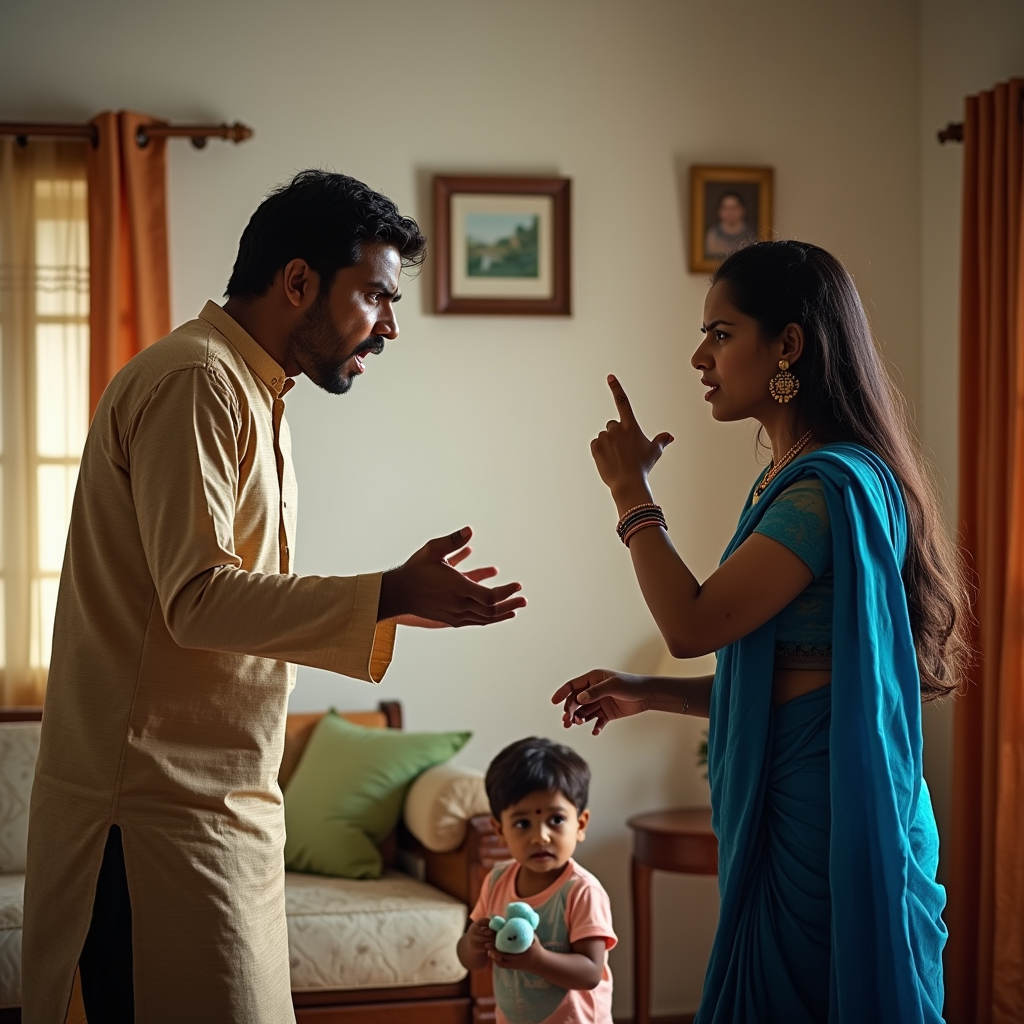
At this juncture, the court rejected the findings of Exhibit R-8 and R-9, which were used to corroborate the mental cruelty inflicted by the appellant over the respondent. In the absence of such evidence, the respondent had to prove the accusation of mental cruelty by some other means. The court took cognizance of other findings to ascertain the question of mental cruelty. The court relied on the fact that the husband was constantly pestered by the behaviour and treatment of the appellant. This facet of the appellant was demonstrated by her actions in the public forum on many occasions, which dismantled the public image of the respondent. In addition, she also made baseless allegations regarding the family of the respondent and the intention of remarriage to the respondent for the greed of dowry without any evidence to substantiate it. The court came to the conclusion that the intention of the respondent was not only to defame the character of the respondent but also to demean the reputation of the family. The judgement of the case Ravi Kumar vs. Julmidevi (2010) was cited to reiterate the fact that cruelty not only means physical violence but also the absence of mutual respect between the partners.
Next, the desertion claim of the appellant was taken into adjudication by the Supreme Court. The appellant, in her petition, claimed that the respondent deserted her and her child, which affected their livelihood. The court took notice of the cognizance made by the Family Court and the High Court in this regard. It was proved in the lower courts that the wife did not make any reasonable effort to unite with the husband, even after the respondent made visits to the parental home of the appellant. Thus, the wife initiated the factum of separation. Both the High Court and the Family Court predominantly attributed the failure of the wife to make an effort to unite with the husband even after a long separation. However, the Supreme Court held a different view in this matter. The respondent sought a divorce, claiming the reason of mental cruelty. It was also interesting to note that desertion was not pleaded by the respondent’s counsel to seek divorce. So, it becomes unnecessary to prove the desertion accusation. Thus, the court held that it was an inaccurate step made by the Family Court and the High Court to investigate the desertion made by the wife, and the findings of desertion were eventually dislodged.
The subsequent issue was about the power of the court to interfere in the findings of facts when an appeal is made under Article 136 of the Indian Constitution. The appellant claimed that the findings made by the High Court in connection to mental cruelty against the respondent were erroneous. It was held in the case of the State of U.P vs. Babul Nath (1994) that the Supreme Court does not usually revisit the credibility of evidence recorded by the High Court unless there is an error of law, error of record or contravention of natural justice in the recorded evidence. The Supreme Court came to the conclusion that the findings made by the Family Court were true to their value, and the High Court did not make an error of law or record in accepting the validity of those findings.
Finally, the court dealt with the pecuniary accept of the case. The Family Court fixed the maintenance claimed by the wife under Section 18 of the Hindu Adoptions and Maintenance Act, 1956, at 12,500 rupees per month from the date of filing of the petition. The permanent alimony was fixed at 5,00,000 rupees each to the son and the wife. The issue of maintenance was not discussed by the Supreme Court; rather, the issue of permanent alimony was contested. It was stressed in the Supreme Court that the appellant and her son had been living separately for the past 16 years. The respondent agreed to buy a flat for the appellant in Hyderabad. There was a dispute about the location of the flat between the parties. In the case of Vinny Parmar vs. Parmvir Parmar (2011), it was held that the permanent alimony should be fixed, keeping in mind the comfort and reasonable living of the wife that she was used to in her matrimonial home. However, the amount fixed should not be excessive to the other party. Keeping in mind the status and income of the respondent, the permanent alimony was fixed at 50 lakh rupees. It was also noted that alimony does not satisfy the luxury needs of the wife, but it should not cause discomfort.
Precedents preferred
The important precedents cited to reinforce the arguments and to derive the judgement are discussed below:
Dr. N.G Dastane vs. Mrs. S. Dastane (1975)

This case is a landmark case in deciding matrimonial disputes. The judgement resulted in the inclusion of ‘cruelty’ as a ground to obtain divorce. The judicial separation was asked on the grounds of fraud, cruelty and unsoundness of mind. The case was decided by Honourable Justice Y.V. Chandrachud, Justice P.K Goswamy, and Justice N.L Untwalia. The petition of judicial separation was filed under Section 10(1) and Section 23(1) of the HM Act. The parties engaged in a marital relationship on 13th May 1956. The respondent suffered from sunstroke, which affected her mental condition before marriage. The father of the respondent informed the appellant and his family of this in a letter before the marriage. The parties had two daughters. In 1961, the appellant sought police protection, informing that his wife was a threat to his life. The respondent also accused her husband of his cruel behaviour and eventually sent a letter to the Ministry of Food and Agriculture. The respondent also claimed maintenance for her and her daughters. Subsequently, the appellant moved to the court seeking divorce under Section 13(1)(3) of the HM Act. He also accused his wife under Section 12(1) of obtaining his consent for marriage by fraud.
The appellant accused the respondent’s family of concealing the condition of the respondent. The respondent was identified with schizophrenia and took treatment for it before marriage. It was also noted that the respondent behaved aggressively with the appellant and his daughters. In reply, the respondent accused her husband of treating her with cruelty and deserting her for having sexual intercourse with others. The court on inspection of documentary evidence and statements from parties, came to a conclusion that the respondent due to her condition treated the appellant with cruelty. The court ordered the appellant to pay interim maintenance to his wife and the custody of the children was provided to the appellant until they became major. The appellant was also mandated to pay the costs incurred by the respondent and left the decision of judicial separation to the court of relevant jurisdiction.
Ganga Kumar Srivastava vs. State of Bihar (2005)
This case deals with the scope of Article 136 of the Indian Constitution. The appeal is against the order of conviction under Section 161 of the Indian Penal Code, 1860 and Section 5(2) of the Prevention of Corruption Act, 1988. The appellant was accused of demanding a bribe of five hundred rupees for providing an electrical supply to the motor pump belonging to the complainant Mr. Harendra Kumar Singh. The appellant was tried by the Special Judge (Vigilance) North Bihar, Patna. The appellant was convicted of the offences and was sentenced to one year imprisonment. The appeal in the High Court of Patna was dismissed. The issue in contention before the Supreme Court was whether the evidence on record was properly justified.
The judgement clarified the principles to follow while exercising the power of the court under Article 136 of the Indian Constitution.
- The powers under Article 136 of the Constitution are wide but the court cannot interfere with the findings of a criminal case except in exceptional circumstances.
- If the High Court has improperly decided on the facts, then the Supreme Court can interfere with the findings.
- The powers under Article 136 of the Constitution can be invoked when the question of law on public domain has to be answered and if the question disturbs the conscience of the judiciary.
- When the evidence produced by the prosecution or the defence did not meet the reliability factor.
- When the principles of natural justice are breached and the decision of the High Court is contrary to the evidence recorded.
Thus, the court allowed the appeal and dismissed the orders made by the Special Judge and High Court. The appellant was exonerated from the charges against him.
Samar Ghosh vs. Jaya Ghosh (2007)
This case deals with the concept of mental cruelty. It was decided by the bench comprising Justice B.N. Agarwal, Justice P.P. Naolekar and Justice Dalveer Bhandari. The appeal was related to a marital dispute between two Indian Administrative Service officers, Samar Ghosh (Petitioner) and Jaya Ghosh (respondent). Their marriage was solemnised under the Special Marriage Act, 1954. The respondent was married earlier and had a child from that marriage. After legally separating from her husband, the respondent married the appellant. The respondent insisted the appellant not to interfere in her professional life and asserted not to have children. The petitioner contested that the respondent refrained from having an emotional connection with him. In the course of time, the respondent withdrew herself from marital duties, which led them to temporary separation. This issue further aggravated and turned into an argument. The appellant claimed that he was inflicted with mental cruelty by the respondent by the means of argument and desertion. Eventually, the appellant filed for divorce in the Trial Court, which was granted. In the appeal before the High Court of Calcutta, the decision made by the Trial Court was overturned.

By filing a Special Leave Petition in the Supreme Court, the petitioner appealed against the order of the High Court. The major issue that was presented before the Supreme Court was related to the allegation of mental cruelty against the respondent. On careful examination of facts and findings, the bench laid down a few principles to determine the psychological aspect of cruelty.
- Mental cruelty is a chronic agony caused by either of the parties, which makes the relationship not maintainable.
- A mere lack of attention cannot be considered mental cruelty. To ascertain mental cruelty, continuous rudeness and neglect are required.
- Unacceptable conduct of one spouse and neglect of the conjugal duties that affect the state of another spouse can be considered as mental cruelty.
- Conduct should not include normal emotions like possessiveness, jealousy and dissatisfaction.
- The court should not consider mere day-to-day quarrels as a reason for cruelty and should not grant a divorce based on it.
- If either of the spouses decides to undergo sterilisation without the consent of the other spouse, then that act can be considered as mental cruelty.
- To grant a divorce based on mental cruelty, the court should circumspect the entire marital life.
Considering these factors, the Bench decided to grant divorce to the parties on the grounds of mental cruelty.
Vinny Parmvir Parmar vs. Parmvir Parmar (2011)
This case deals with the concept of permanent alimony under Section 25 of the HM Act. The case was adjudicated by the bench comprising Justice B.S. Chauhan and Justice P. Sathasivam. This case was an appeal made against the order of the High Court of Bombay. The parties dissolved their marriage by consent under Section 13B of the HM Act. While deciding on the amount of maintenance and permanent alimony, the High Court confirmed the order of the Family Court to fix the maintenance at 20,000 rupees per month. The High Court, in addition, mandated that the husband pay 20 lakhs to the wife within 3 months of the date of the order. Not being satisfied by the maintenance amount appealed to the Supreme Court.
While dealing with this case, the court commented on the issue of fixing the amount of permanent alimony. While considering Section 25 of the HM Act, the court was of the view that the husband’s income and all property details had to be analysed. The court also mentioned that no single formula can be provided to calculate the amount of permanent alimony. Factors like the status of the parties, relative needs, capacity of the husband and his needs are relevant before fixing the alimony. It was also noted that the amount fixed for permanent alimony should be sufficient for the wife to maintain a decent standard of living with reasonable comfort based on her innate status. The court ordered the husband to pay 40,000 rupees a month as maintenance and 40 lakh rupees as permanent alimony within six months from the date of the order.
Dubaria vs. Har Prasad and Anr (2009)
This case deals with the concept of interference of the court with the concurrent findings of the case. This is an appeal filed against the judgement of the High Court of Allahabad. The case was presented before the bench comprising Justice Aftab Alam and Justice Tarun Chatterjee. The appellant of this case, being a plaintiff, filed a suit for permanent injunction restraining the defendants-respondents from interfering with the possession of his property in the district of Banda before the Munsif Court. The plaintiff registered a sale deed and purchased the property. Since the respondents interfered with the property even after the purchase, the plaintiff filed the injunction suit. The Munsif, upon inspection of records, made a judgement in favour of the plaintiff. The respondents preferred an appeal before the Second Additional Judge, Banda. The first appellate court set aside the judgement of the Munsif Court, asserting that the plaintiff was not the owner of the property. The plaintiff went for a second appeal in the High Court of Allahabad. The High Court dismissed the appeal, quoting that the judgement of the Additional Judge was based on the findings of the fact and that the High Court could not interfere with the findings.
Thus, the plaintiff opted for an appeal in the Supreme Court through a Special Leave Petition. After hearing the arguments of the parties, the bench was of the opinion that the High Court did not analyse the material and documentary evidence on record to corroborate the findings on the fact. Instead, it opted not to interfere with the findings of the first appeal Court. The Bench also urged that it was the duty of the High Court to verify all the records and also the admissions made by the respondent in favour of the appellant. Therefore, the judgement of the High Court was set aside and remitted back the case to the High Court to make fresh consideration of all the observations made in the Supreme Court.
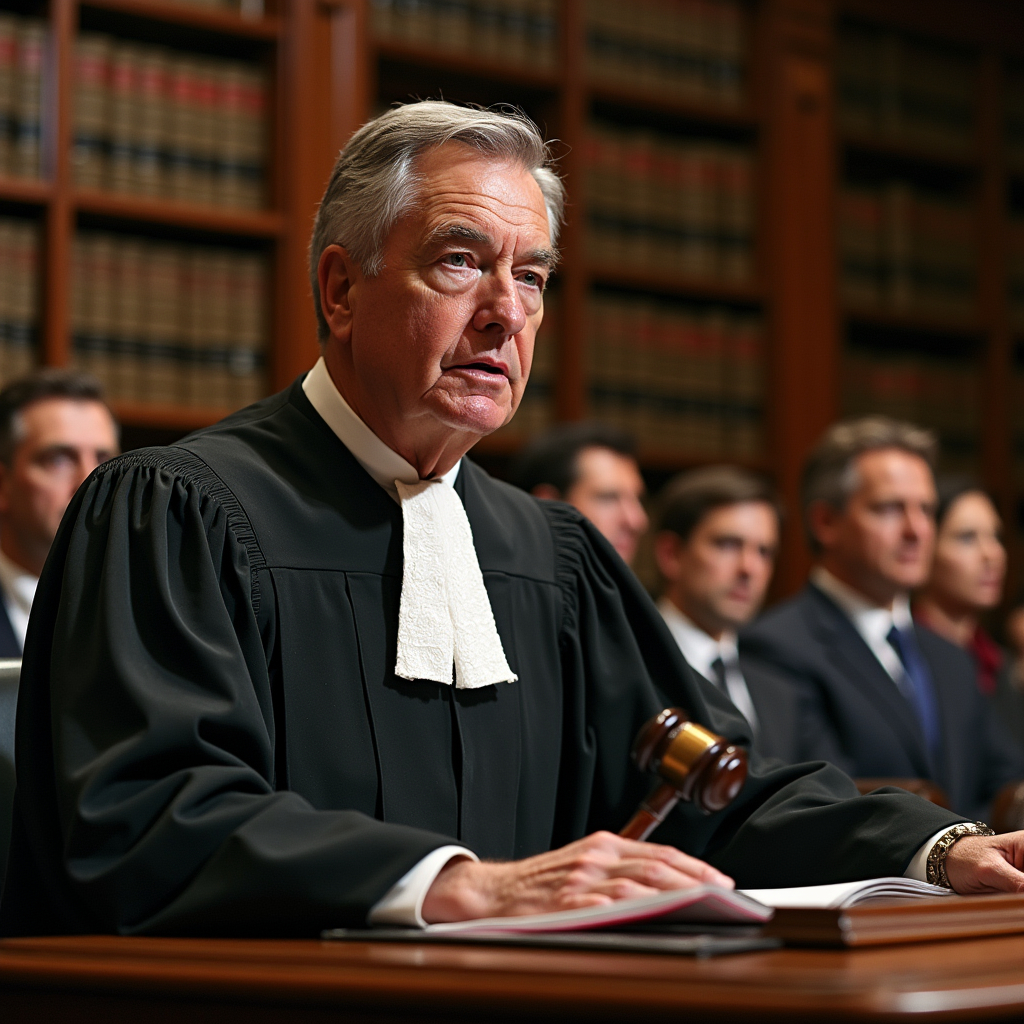
Further cases for which the U. Sree case was cited
| S.No | Case | Court | Observation |
| 1 | Shri Mohit Arora S/O sh. Shashi Bhushan vs. Sh. Vineet Sehgal (2020) | Delhi District Court | It was held that the secondary evidence presented was not enough to prove the claim of the plaintiff. The necessary conditions required to accept the secondary evidence were not satisfied. |
| 2 | Suchitra vs. Zubin Shekary(2018) | Madras High Court | The question of permanent alimony was discussed. It was quoted that the aim of granting permanent alimony was not to facilitate the luxurious life of one spouse at the cost of another. It was commented that while calculating permanent alimony, regard must be given to the hard labour put in by one spouse to earn money. |
| 3 | Smt. Kodali Jhansi Rani vs. Valasala Venkta Ramana (2015) | Telangana High Court | By quoting the U. Sree case, the High Court held that the secondary evidence was admitted as it satisfied the conditions mentioned in Section 65 of the Indian Evidence Act. |
| 4 | Jitendar Saksena vs. Mallika Saxena (2013) | Allahabad High Court | The judge commented that the matrimonial disputes have to be looked at in a pragmatic manner by giving attention to the ground realities. The most important factor to be considered is whether the marriage can be sustained so that the couple can live happily and create a harmonious environment for their offspring. |
| 5 | Dr. Geeta W/O Dr Mahantesh Patil vs. Dr. Mahantesh Patil S/O Dr. V.D. Patil (2016) | Karnataka High Court | The case dealt with the grounds of mental cruelty to grant divorce. It was held that the husband was inflicted with mental cruelty, which stands as a valid reason to grant divorce. It was also held that the custody of the child remained with the mother, though the claim was made by the father. The alimony and maintenance were fixed in accordance with the needs and income of the spouse. |
| 6 | Mahesh Chander Sharma vs. Renu Sharma (2016) | Himachal Pradesh High Court | The court examined both the English law and the Indian law to determine the meaning of cruelty. The cruelty might largely depend upon the economic, social and cultural settings of the parties. The cruelty may be physical or mental, intentional or unintentional. The conduct of the parties must be properly construed to determine the gravity of the act of cruelty. |
| 7 | Jaspal Singh Tiwana and Anr vs. Mohinder Singh Sandhu and Ors (2017) | Punjab – Haryana High Court | The conditions required to be fulfilled to allow the secondary evidence to be permitted were discussed in this case. The court held that mere denial by the party who possesses the original document cannot be claimed as the reason to accept the admissibility of secondary evidence. The court is of the view that there is a high possibility of the secondary evidence being tampered with. |
| 8 | Vinay Kumar Pathak vs. Smt. Annapurna Awasthi (2017) | Allahabad High Court | The court reiterated the Supreme Court’s statement on permanent alimony. There is no fixed formula to calculate the amount of permanent alimony. Rather, it depends upon the social needs and the capacity of the spouse. The court also stressed the fact that the living bestowed upon the spouse need not be luxurious. |
| 9 | J. Muthu Krishnan vs. G. Radhika (2018) | Madras High Court | The court mandated the Family Courts to grant divorce to the parties only when the relationship between the couple deteriorated above possible correction. The court also noted that cruelty could never be exact. The meaning should be construed based on the ground realities and living conditions of the parties. The duration of separation is also considered while granting divorce to the parties. |
| 10 | D.D.A and Ors vs. Ram Kaur and Ors (2017) | Delhi High Court | In this civil suit, the decree of the Additional District Judge adjudicated the claim of ownership of a land. U. Sree’s case was quoted to ascertain the fact that mere admission of a document enlisted in evidence does not amount to its proof. It was also held that the burden of proof always lies on the petitioner in civil disputes. |
Comprehensive analysis of the case

The foundation of a community is set by the families prospering in it; likewise, the strength of the family lies in the bond between its members. To ascertain this bond, a system of marriage was initiated. Marriage is an emotional, social, cultural and economic engagement made between two people. The initial reason for marriage is to produce offspring. Later, it changed into a social agreement. The mode of marriage in historical times was between clans to enhance their fortunes. However, free-choice marriages have become predominant in recent days. With the development of concepts of self-rights and equality, marriage is seen as a legal agreement along with the other aspects. Now, there comes an opportunity to end the legal agreement in the event of violation of rights or abuse. The marriages in India are governed by a few legislations:
| S.No | Legislations | Application |
| 1 | The Hindu Marriage Act, 1955 | This applies to Hindus, Sikhs, Buddhists and Jains |
| 2 | The Indian Christian Marriage Act, 1872 | This applies to Christians |
| 3 | The Parsi Marriage and Divorce Act, 1936 | This applies to people following Zoroastrianism |
| 4 | The Special Marriage Act, 1954 | This applies to inter-caste, inter-religion and inter-country marriages |
| The Muslim community in India does not have codified legislation to govern marriages. Instead, they abide by the Shariat law for all personal contracts | ||
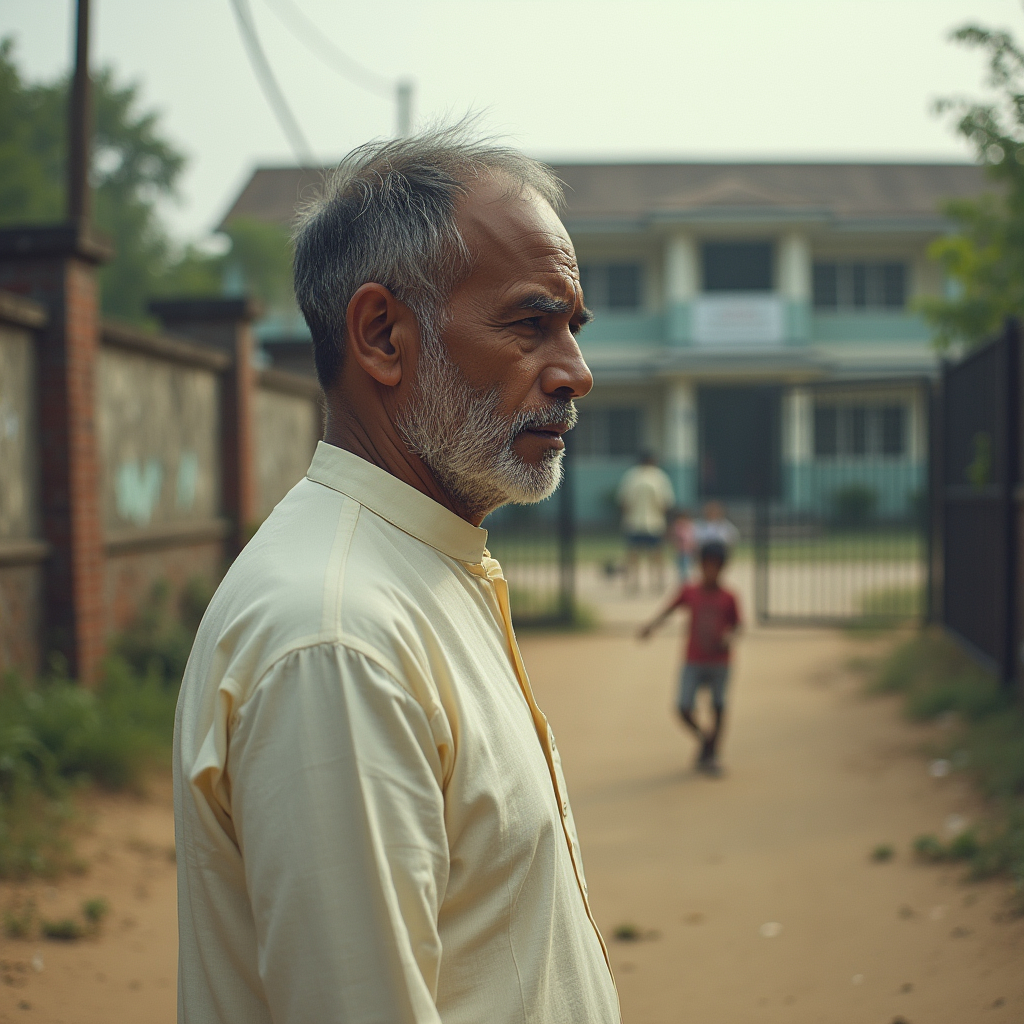
The institution of marriage grants the parties various rights. They include
- To become a legal father/ mother of the spouse’s child.
- To have conjugal rights.
- To have a partial right over the economic prowess of the spouse.
- To have rights over children.
- Establish a social contract and ascertain the institution of family in society.
Marriage is not only seen as a sacrosanct event in an individual’s life but also as an economic activity of the family. Usually, marriages in India involve a huge sum of money based on the social status of the families. This social picture and the associated investment make marriage a moral compulsion to continue the relationship, facing any difficulties that may arise. The marital relationship, like any other partnership, also embeds violations and encroachments. This leads to the ultimatum called divorce, which is the judicial separation of parties involved in marital engagement. The most common reasons leading to divorce are
- Lack of commitment in the relationship,
- Persistent arguments and conflicts,
- Religious differences arising post-marriage,
- Infidelity,
- Unrealistic expectations amongst the partners,
- Economic inequalities between the partners,
- Early marriages for the sake of families,
- Domestic violence,
- Problems related to sharing of domestic and family commitments,
- Conflicts between the members of the family,
- Dowry and related abuse,
- Fraud and concealment of information prior to marriage, etc.
The problems arising out of marriage are dealt with through legislation like
- The Indian Penal Code, 1860
- The Protection of Women from Domestic Violence Act, 2005
- The Hindu Adoptions and Maintenance Act, 1956
- The Muslim Women (Protection of Rights on Divorce) Act, 1986
- The Dissolution of Muslim Marriages Act, 1939
- The Muslim Women (Protection of Rights on Marriage) Act, 2019
Though the divorce rate in India is less than the global average, it is the need of the hour to shed light on these marital issues before the rate of divorce exceeds the alarming level.
Family metrics and divorce
The cultural shift and educational progress have greatly contributed to the legal landscape of the country, especially in the field of family affairs. Prior to this shift, the society was patriarchal in nature, where the rights of male members were only given predominance. The women in the society are considered as the subjects of their male counterparts. This might be attributed to the minimal reporting of family crimes. However, with the renaissance of human rights, gender equality was given a foothold in the contours of work, family and education. In the Indian precinct, factors like caste and power played a major role in preventing women from reaching their potential. The family was also a bottleneck in the course of the development of women. With the combined efforts of various revolutionaries and through governmental actions, equanimity has been set in gender-related issues, especially around the family. These privileges made the women vocal about the violation of their rights and advocated towards attaining them. The process of matchmaking became much more non-conventional with the lesser intervention of typical intermediaries. The legal machinery also made necessary amendments to the existing laws and introduced new laws to deal with the marital problems faced by women. These steps have proved to be a panacea in the lives of various women who have been the victims of oppression within the family. However, it should also be noted that owing to these changes, there is a sharp increase in the divorce rate. Various important metrics related to divorce in India have been highlighted by the publication of the International Journal of Management, Technology and Social Sciences (IJMTS) in 2018. It was noted that the divorce rate in India has seen a sharp rise from 7.4% to 11%, corresponding to the years 1991 and 2001.
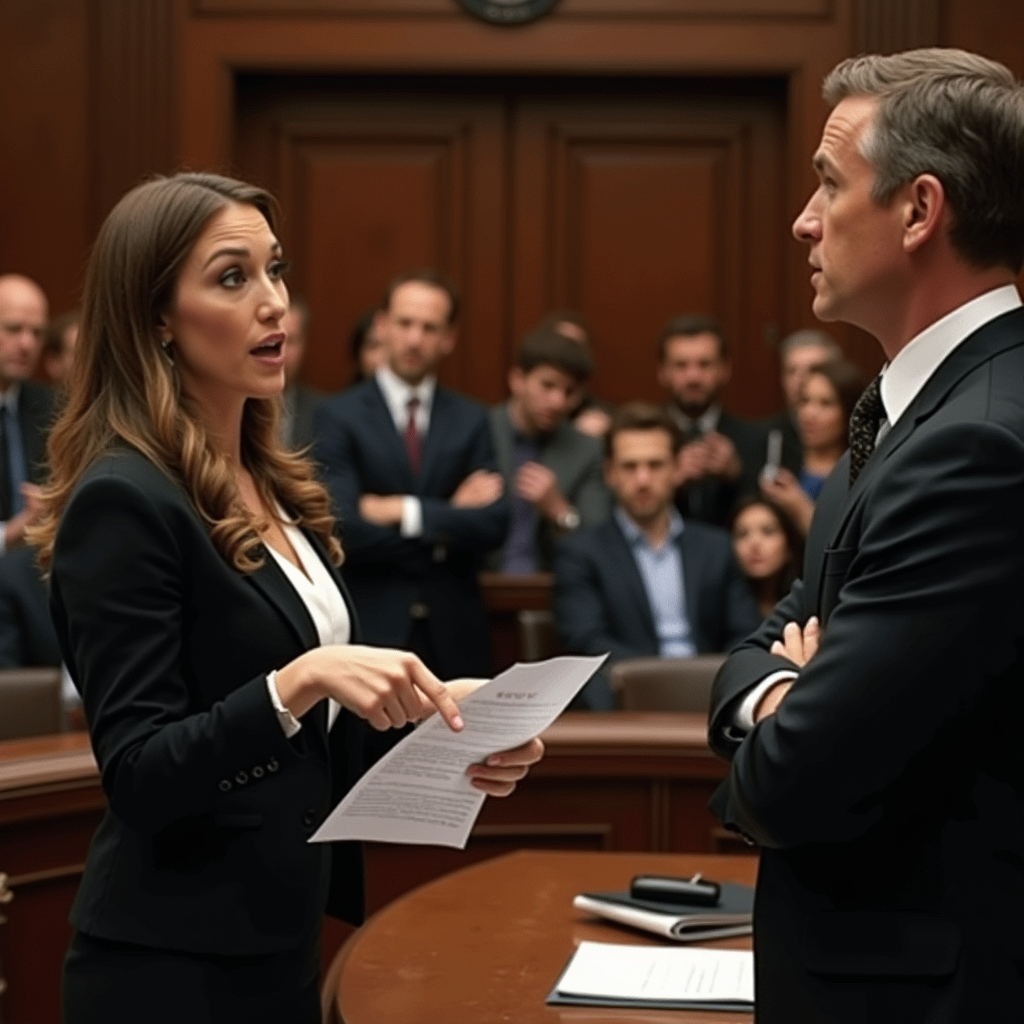
The data showed that the majority of divorces occur among respondents in the age category of 30-39 years. In this demographic sample, divorce in the male population occurs after the age of 35, and in the female population, it occurs prior to the age of 35. It was also found that the majority of recipients of divorce are literate, out of which 4% of males and 8% of females were post-graduates. One of the interesting facts highlighted in the paper was that out of the recipients of divorce, the female population was better educated than the male population. This was ascertained by the fact that the number of undergraduate women obtaining a divorce was twice that of the men. Nearly 42% of the recipients of divorce belong to private employment, which is a significant factor describing the relationship between the working sector and divorce.
The geographical spread of divorce was also attributed to the research conducted. Nearly 62% of people who received divorce belonged to rural origin, 24% belonged to semi-urban regions, and the remaining belonged to urban origin. As far as family orientation is concerned, the majority of divorces occur in couples from nuclear families. It stands at 54% out of the total divorces, whereas 44% belonged to joint families. The publication also mentioned a noteworthy fact that 66% of the recipients of divorce are childless couples. So, there is a relationship between the childlessness of a couple and their affinity towards attaining divorce. Most of the divorce cases were initiated by females, which stands at 58% of total recipients.
The reasons for pleading for divorce vary depending on demography, family status, tradition, and occupation. According to the results of the research, nearly 52% of the cases arose due to poor communication between couples, 48% arose due to family quarrels, 38% arose due to comparative ego, 36% arose due to interference by family members, and 16% arose due to financial issues. It is also worth noting that these problems are intertwined with each other, and couples might divorce owing to multiple reasons at the same time. Other reasons also contribute to divorce among couples. It includes adultery, which stands at 16% of total cases; domestic violence, which stands at 14%, deserting by partner, which stands at 10%; impotency among the spouses attributed to 6% of total divorce cases; and religious conversion contributes to 2% of divorce cases. Out of all the cases, 30% of divorces were granted through mutual consent by the parties.
In the global context, based on the report by the UN Population Division (2018), the percentage of women between the ages of 15 to 49 years who are either married or cohabiting from the year of 1970 to 2020 was studied. The East Asian region had the highest percentage standing at 70.6%, whereas the region of Northern Europe had the lowest percentage at 50.7%. The global average was 63.7%. The region of Western Africa, which had the highest figure of 77.2% in 1970, crashed to 62.9% in 2020. Through the decades, the South American region had a saturated lower level of cohabitation. This can also be noted in the percentage of households consisting of single-parent and dependent children based on 2015 records. The South American nation of Colombia had the highest percentage of 12.7%, whereas India had the lowest percentage of 5.4%.
A report on marriages and divorces by Our World In Data (OWID) revealed the status of different nations in terms of the crude divorce rates per 1000 people in 2018. The United States of America had the highest rate among all the countries, which stood at 2.9 per thousand. South Korea stood second at 2.1, followed by Norway, the United Kingdom and Turkey at 1.9, 1.8 and 1.6, respectively. The country with the lowest divorce rate was Chile, with 0.4 divorces per thousand people. According to a report by Forbes Advisor Diary, nearly 73% of divorces arose after the third marriage in the USA. It was also interesting to note that only 6% of divorced couples remarry each other. These facts highlight many facets of the family and the society which should be retrospected in a broader perspective.
International Precedents

The private international law governing family issues varies based on the tradition of a country. With the advent of globalisation, the issue of a nation becomes the issue of the world. There is a vast imbalance in the uniformity of family laws across boundaries. Families cross borders to settle in different nations, inter-country marriages and the movement of children affect the propensity of the underlying issue. Marriage and family are largely influenced by the domestic laws and the thoughts of the land. Post-industrialisation, family laws have been relaxed predominantly to cater for the needs of people from multiple ethnicities and cultures. In the United States of America, family law is governed by the Restatement of Conflict of Laws (1971), also known as the Second Restatement. The family law stands on the line of no faulty theory and a wider property-sharing ambit. The No-fault theory advocates that failure to sustain a marriage is not because of the fault of one of the spouses. Rather, it is because of the non-compatibility between the spouses. The Second Restatement tried to make the family law compatible with the present need. However, it also ensured that older traditions and family guidelines are preserved.
The civil laws of a country with a high immigration rate are greatly influenced by various parameters like immigration laws, a tradition of foreign-born population, and foreign laws, including Hindu Law and Sharia law, etc. There are also internal conflicts between states regarding determining a uniform code to resolve marital issues. To counter this, the Supreme Court of the United States of America shifted towards dealing with family conflicts based on the individual rights to marry or divorce based on the Due Process and Equal Protection clause stated under the Fourteenth Amendment. This system was followed by the Supreme Court to counter the Full Faith and Credit Clause principle, followed by the States provided under Article IV Section 1 of the US Constitution. This full faith and credit clause principle mandates that the states of the United States respect the public acts, records, and judicial pronouncements of every other state.
The right to marry is a basic human right ensured by legislation of many countries as well as through Article 16 of the Universal Declaration of Human Rights (UDHR), 1948. The United States recognises marriage as a right since many rights originated and propagated through marital status. The concept of interracial marriage was accepted in the United States after the landmark of judgement of Loving vs. Virginia (1967). The case arose after a white man and an African-American native woman travelled to Washington, D.C., from Virginia to get married in 1958. After they returned back, the Virginia Police arrested the couple for violating the state’s ban on interracial marriage. The Virginia state Court awarded one-year imprisonment to the couple but provided relief on the condition that the couple leave the state immediately. The Lovings appealed to the Supreme Court of the United States, where the judge reversed the conviction on the basis of the equal protection clause. By a 9-0 majority, the Supreme Court struck down the racial discrimination statutes in Virginia as unconstitutional under the Fourteenth Amendment. Thus, a marital issue led to the unclogging of a human rights issue in this scenario.
Apart from US laws, various international agreements and conventions focus on marriage, family welfare, and marital issues. The Hague Convention of 1978 extends the recognition of multicultural marriage across the globe and discusses the relevant property regimes. Following the UDHR, the principles were elaborated in 1962 by the United Nations Convention on Consent to Marriage, Minimum Age for Marriage and Registration of Marriages. The United Nations ratified the Convention on the Elimination of All Forms of Discrimination Against Women (CEDAW) in 1979 to protect women from abuse and violence in all walks of life, including the marital phase. To ensure that there are guidelines to determine the civil and political rights of an individual, the International Covenant on Civil and Political Rights (ICCPR) was ratified in 1966.
Similar to the right to marry, an individual should have the right to be separated from a toxic marital relationship. The process of legal separation in the US is based on the domicile of the petitioner. Sections 70 and 71 of the Second Restatement grant power to the state to dissolve the marriage when both spouses are residents of the same state. In the case of Dawson vs. Dawson (2012), the Supreme Court held the view that, apart from abusing or inflicting physical harm to the spouse, a mere act of pressurising the woman to abort amounts to mental cruelty, which is the grounds for divorce. In Barnes vs. Barnes (1892), the Supreme Court of California held that there is no proper scale to measure the mental cruelty faced by a person. It differs from one individual to another. Though not quantifiable, mental cruelty inflicted cannot be surpassed. The Trial Court should have taken this cruelty into consideration while dealing with marital separation. The Judge also stressed the need to provide the defendant, who was a non-resident woman, with proper opportunity to defend the case, though belonging to another state.

The Black’s Law Dictionary defines cruelty as an act of inflicting suffering on another person without any remorse or mercy. In Halsbury’s Law of England, 1269 Volume 13, the concept of cruelty in marital issues is defined. While considering cruelty in matrimonial relationships, the entire period of cohabitation has to be taken into account. When no violence is resorted by either of the spouses, then the judicial pronouncement of separation need not be hastily delivered. To determine the extent of mental cruelty, the effect of the conduct of the spouse has to be analysed rather than the nature of cruelty or mode of cruelty. The law mandates the courts to look into the social status of the parties, their individual personalities, mutual conduct, frequency of quarrels and the complainant’s capacity to persevere before arriving at a conclusion. Intention to inflict cruelty is not a paramount factor, yet it is the element to be noted to proceed with legal separation.
The book “The Law and Practice in Divorce and Matrimonial Cause”, written by William Latey, and published in the year 1973, speaks about the power of different courts in dealing with cases related to marital disputes. The book also highlights the factor of cruelty, which originates within the premise of marital boundary that forms the prime reason for divorce. The process of divorce was reformed in England by passing the Divorce Reform Act, 1969, which tried to distinguish between the grounds of divorce and abolished the gender difference in the determination of grounds. Later, the divorce Act was repealed, and a new act named the Matrimonial Causes Act,1973 was introduced, which mandates the petitioners to seek divorce only if the ground for separation was irretrievable damage to the marriage. In the earlier days, the precedents laid reliance only on the physical aspect of the cruelty. In the case of Evans vs. Evans (1790) the court held that before putting the onus of guilt on the husband for cruelty, it became mandatory to verify whether any bodily injury was inflicted upon the wife, which would make the future cohabitation highly impossible. In the case of Simpson vs. Simpson (1951), the court demarcated the concept of cruelty into two parts. Firstly, the act of cruelty in contention and, secondly, the resultant effect on the victim. So, it was held that a mere description of the cruelty is not enough to determine the level of crime.
The Canadian courts have followed the same principles as that of the US law in dealing with matrimonial issues. In the case of Knoll vs. Knoll (1970), the court tried to explain the concept of cruelty. Cruelty is a significant effort to cause suffering to others. The conduct of one party might have cruel effects on the other party, which amounts to physical or mental cruelty. The gravity of such an act can determine the possibility of cohabitation of the spouses. The judges also commented on the recent stigmatisation of the concept of mental cruelty. In Australia, while dealing with the case of La Rovere vs. La Rovere (1962), the Supreme Court of Tasmania differentiated between the philosophical concept of cruelty and the legal concept of cruelty. The legal standpoint of cruelty is the act of violence combined with the endangerment of the victim. In New Zealand, the Divorce and Matrimonial Causes Amendment Act, 1920 initiated the process of making an agreement between the parties for three years or more before filing a petition for divorce in the court.
Subsequent effects and way forward
The U. Sree vs. U. Srinivas is one of the landmark cases in dealing with matrimonial issues. Unlike a normal judicial separation case, this case dealt with a few important contentions. The most important one was to determine whether the marital relationship reached an irreparable stage, such that the spouses could not cohabit hereafter. The next important contention was related to the mental cruelty accusation against the wife. Marriage is not merely an agreement between two parties; rather, it is a collaboration among a community. Therefore, divorce cannot be arrived at abruptly based on the immediate accusations. The entire term of marital cohabitation of parties should be looked at with an eagle view to determine if their marriage is beyond repair. The 217th report of the Law Commission was released in April 1978. The report touched upon the concept of irretrievable breakdown of marriages—the question of whether the divorce should be provided on the grounds of fault theory or breakdown theory. The fault theory deals with the act of violence or criminal conduct performed by the spouse, which becomes a causative agent for filing for divorce. The onus of fault lies on one particular spouse based on this theory. Whereas, the breakdown theory is based on the possibility that all chances are exhausted, after which the cohabitation of spouses is not possible.
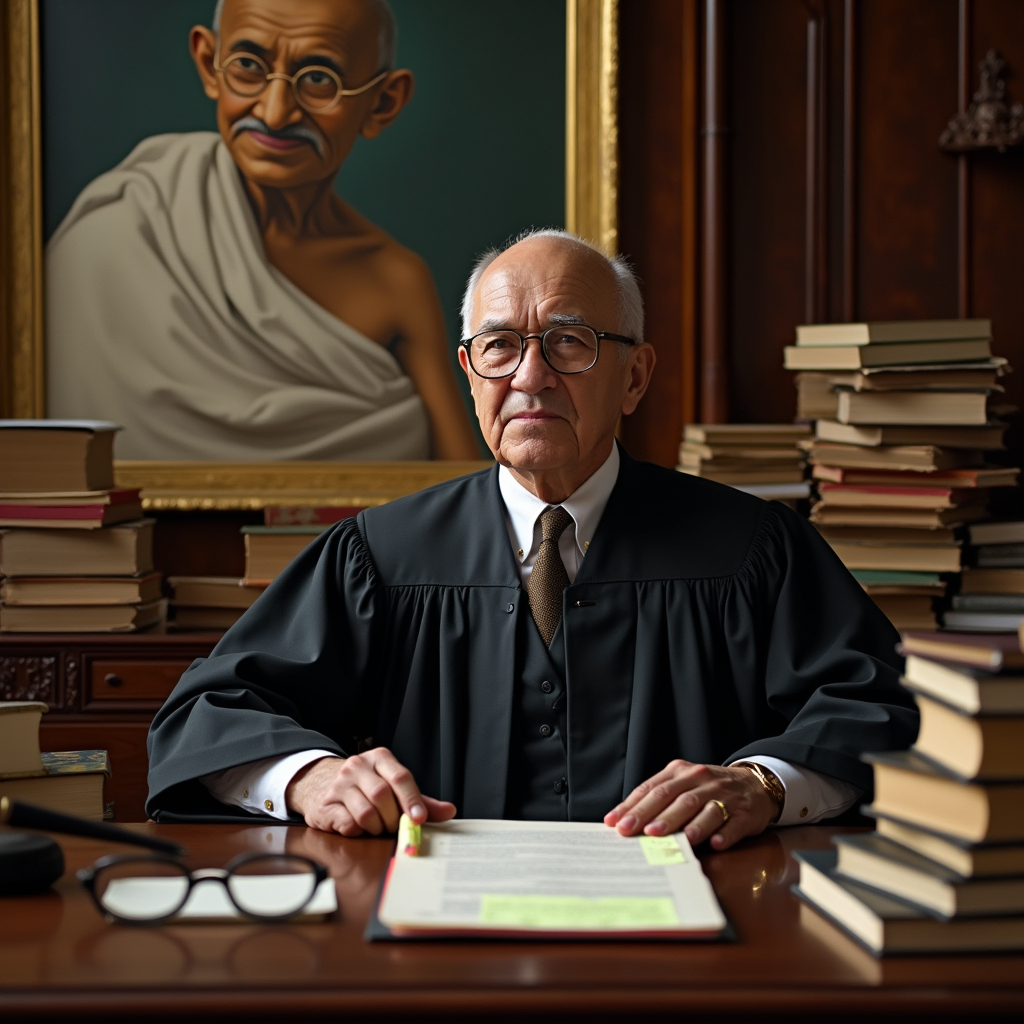
Before discussing the preventive strategies, it is paramount to know the ill effects of marital disagreement and the resultant separation. The major effect of judicial separation is the impediments to the well-being of the children. In the U. Sree case, the couple had their child in May 1995, after which they got separated in January 1996. So, only for a span of 7 months, the child was under the aegis of the parents. The case was finally disposed of by the Supreme Court in 2012. By that time, the child would have been a 17-year-old teenager. The child became devoid of the opportunity to spend the childhood with the parents. This might affect not only the well-being of the child but also the social temperament. The social system of our country is based on the harmony of the family. Due to technologically driven non-conventional types of matchmaking, marriages have lost their traditional boundaries. Though this system has countered various issues like caste and boundaries, it lays stress on traditional societal values. The elderlies of the family also get affected by premature divorces. Either they lose their social and economic prospects, or they are snatched off their peaceful old age. Often, marriages in India are congruent with mini-festivals. A huge sum of money is spent on the marriage that is relevant to the status of the spouses. When the marriages fail abruptly, then in addition to the loss of spending on marriage, alimony also has to be settled.
However, the facility of judicial separation is provided to prevent either of the spouses from the hardship that is bestowed upon them. It provides an opportunity for them to break off their shackles and probably find a pair with better compatibility. Most of the divorce cases filed have domestic violence as the ground for their claim. The legal system does not accept violence in any form and is the primary guardian of the oppressed. So, it is justifiable for the court to grant divorce to a real victim of domestic violence. Many partners face desertion and mental cruelty, as in the U. Srinivas case, which questions the reliability of marital agreement. Therefore, the decision of judicial separation is neither a modern evil that disturbs the tradition nor the only solution to all marital problems. The courts have to base their decisions not on the fault of the spouses but on the repairability of the relationship.
It is imperative to establish a balance between the stability of the family and actions to prevent marital abuse. A comprehensive strategy should be put in place to deal with the matrimonial problems. Two important strategies can be fabricated to counter this problem. Firstly, a culture of pre- and post-marital awareness should be developed among the spouses as well as their families. This awareness can be facilitated through Governmental sources or through public-private partnerships. The most important goal should be to nurture communication among the members and inculcate perseverance among the group. Premarital awareness can be brought by indulging in family get-togethers, attending expert sessions with activities and following a generative traditional progression of events. The post-marital awareness is much more realistic in nature since, by then, the spouse would have known the compatibility issues between them and among the families. A neutral moderator should be employed to carry forward this session of awareness. The session should involve a regressive analysis of the strength of family bonding, repercussions in case of separation and progressive methods to cope with minor disagreements.
Secondly, the reformation of family laws, especially the divorce legislation, to make obtaining divorce more reasonable. The concept of separation is completely different from divorce in both legal and social perspectives. Separation is a temporary space between the spouses to comprehend the differences among them, whereas divorce or judicial separation leads to a completely different path for them as well as their families. The intention of reformation should not be to make the divorce unattainable. Rather, it should be aimed at placing proper checks and balances before determining that the marriage is completely irreparable. The laws should be gender-neutral in nature so that even after divorce is granted, husbands are prevented from being the sole bearer or the liability. In the case of U. Srinivas, in spite of being separated from his child for 17 years and facing mental cruelty during the course of a marriage, he was mandated to pay compensation to his wife, irrespective of her family status. It is the duty of the father to look after the welfare of his children so that the maintenance of the child can be justified. However, when the reason for divorce is not initiated by the activities of one spouse, then bestowing him/her with the liability of maintenance and permanent alimony is nothing short of an injustice. In contrast to this, when domestic violence is inflicted upon women, stringent and quick action should be taken against the spouse and others involved in such an act. A keen observation and resultant investigation should be made on the domestic violence complaints as there is a possibility of using it as a weapon to demean the morale of the spouse and the progress of the case.

Conclusion
The Indian societal and legal system has been facing rapid changes and challenges for the past few decades. The family set-up and concept of marriage is going through a transition phase with the influence of both progressive and regressive elements. There exists a tug-of-war between individual materialistic expectations and family well-being. It is worth noting that not only the percentage of cases filed for divorce is increasing in India, but the reasons quoted for claiming divorce are also becoming trivial. It cannot be denied that divorce has become a panacea for many women from the oppression they have been facing. It has provided them with an opportunity to attain autonomy in decision-making. However, there are instances where a man files for divorce before the Principal Judge in Ballari, Karnataka, as his wife cooks Maggi daily and a case where a woman files for divorce in Family Court, Bhopal, as his spouse was preparing for UPSC civil services exam and does not dedicate enough time for her. There should be a consensus between the thirst for individuality and social well-being only then can the foundation of society and its principal norms be upheld.
Frequently Asked Questions (FAQs)
What are the conjugal rights of marriage?
Conjugal rights are the rights bestowed upon married couples to have the companionship of one another. It is a legally arrived right where the spouses are entitled to live along with one another. This concept of conjugal rights is derived to maintain the well-being of the family. That is why the judiciary enforces the right to restitution of conjugal rights through Section 9 of the HM Act. Also, when this right is not invoked by either of the spouses for the period of 1 year, then they are entitled to divorce under Section 13 (1A) of the HM Act. However, a few legal critics have shown a contradiction in granting these rights. It is argued that this right is against individual privacy and sexual autonomy. It is also a question of the dignity and respect of the individual. In the case of Saroj Rani vs. Sudarshan Kumar Chadha (1984), the Supreme Court held that Section 9 of the HM Act does not violate the provisions of Article 21 of the Constitution, which guarantees the right to privacy.
What is the concept of fair alimony?
Alimony is a method of providing a means for financial sustenance to the aggrieved party. It is usually provided to the spouse who does not have adequate means to take care of one’s own essential needs. As per the provisions, alimony is granted to either of the spouses based on their condition, but in reality, it is usually granted to wives. Alimony is offered either in the form of interim maintenance or permanent alimony. It is provided under the provisions Section 24 and Section 25 of the HM Act, respectively. The concept of fair alimony is devised to prevent the rights of one spouse while advocating for the needs of another. The amount of alimony is determined based on the following factors:
- Duration of marriage,
- The financial conditions of both spouses,
- The well-being of children,
- Liabilities of spouses,
- Other requirements of the claimant.
In the case of Kulbhushan Kumar and Raj Kumari and Anr (1970), the Supreme Court held that the ceiling limit for alimony is fixed at 25% of the income of the husband.
What are the rights of men in marital issues?
While considering the marital issues, the law is predominantly skewed towards women, owing to historic subjugation by men. However, there has been a trend of false cases and violence towards men in the recent decade. This has caused a huge disparity in justice provided to men when compared to the same issue faced by women. The following are the rights that men can adhere to while dealing with a matrimonial problem.
- Men can invoke the right to seek divorce if he is inflicted with mental cruelty by the wife. The case of U. Srinivas is a classic example of this right.
- Men can seek divorce from their wives if any of the following conditions are satisfied:
- Desertion,
- Adultery,
- Venereal Disease,
- Mental Disorder,
- Conversion,
- Celibacy.
- The men can deny providing alimony if the wife is found to have committed adultery or lives in separation without sufficient cause or financially well-established or remarries someone else.
In the case of Gagandeep Singh vs. Bhumika (2024), the Delhi High Court observed that the wife had made false accusations against the husband related to domestic violence. The court held that since the accusations cannot be proved and the wife’s separation from the husband cannot be reasoned, the wife’s claim of maintenance cannot be entertained based on Section 125(4) of CrPC.
References
- https://www.lexisnexis.in/blogs/family-law-in-india/#:~:text=Marriage%2C%20Divorce%20and%20Maintenance%20Under%20Family%20Law%3A&text=The%20act%20also%20deals%20with,guiding%20the%20process%20of%20divorce.
- https://plato.stanford.edu/entries/marriage/
- https://pragyata.com/philosophy-of-hindu-marriage/
- https://www.iium.edu.my/deed/hadith/muslim/008_smt.html#:~:text=Marriage%20is%20a%20social%20institution,Marriage%20has%20thus%20two%20main
- http://alexanderpruss.com/145/KantOnMarriage.html
Students of Lawsikho courses regularly produce writing assignments and work on practical exercises as a part of their coursework and develop themselves in real-life practical skills.
LawSikho has created a telegram group for exchanging legal knowledge, referrals, and various opportunities. You can click on this link and join:
Follow us on Instagram and subscribe to our YouTube channel for more amazing legal content.
 Serato DJ Crack 2025Serato DJ PRO Crack
Serato DJ Crack 2025Serato DJ PRO Crack










 Allow notifications
Allow notifications



